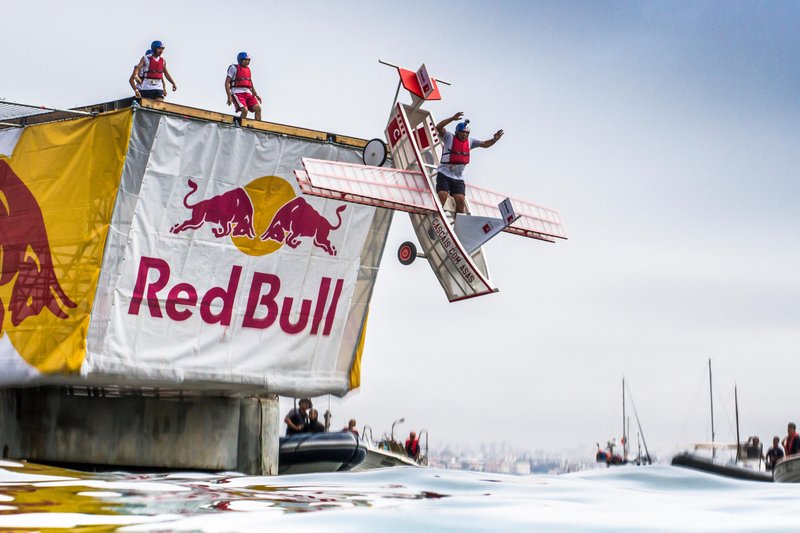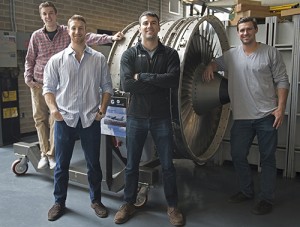AeroAstro Alumni Take the Red Bull Flugtag Challenge
-
-
slice.mit.edu
Filed Under
Recommended

If anyone is qualified to create a wacky, homemade, human-powered flying machine, it’s an MIT grad. Make that five aeroastro alums and you have a recipe for an unstoppable team, which is the goal of the MIT entrants in the Red Bull Flugtag 2016. The competition, begun in 1991 and now hosted in 40 cities worldwide, will be set in Boston’s Charles River on August 20.

The idea is simple: design and build a homemade, human-powered flying machine and launch it from a platform into water. With little restrictions beyond size and weight guidelines, judging is based on distance, creativity, and showmanship—the launch sequence includes a choreographed dance. While many are in it for the fun, the MIT alumni—team captain Billy Thalheimer ’14, SM ’16; Hayden Cornwell ’15, SM ’17; Michael Klinker ’14, SM ’16; Alex Feldstein ’15, SM ’17; and Michael Tomovich SM ’14—are in it to win.
“Half the things that get pushed off the platform I would more describe as parade floats, like a giant shoe or a house or something,” says Thalheimer. “Some of them don’t even have wings. We’re all aerospace engineers by trade, so it seemed like a really good opportunity to apply our learning.”
Typically attended by hundreds of thousands, this year’s Flugtag (German for “flying day”) has been slightly scaled down due to the relatively close quarters of the Charles—the launch will be located close to the Hatch Shell on the Esplanade and the flying machines will soar from a 28-foot-high, 100-foot-long platform, then land in the water. MIT’s team, one of the 30 who were accepted out of 200 applicants, were noted as a team to watch—not only for their relevant technical training but also because they built a craft for last year’s competition in Portland.

Known as the Monkey Ballers, the team has two returning members—Thalheimer and Cornwell. Last year’s vessel, a banana with wings, was built in the backyard of a team member just two weeks before the August 2 competition. Unfortunately, the contest was canceled before their turn to launch. “We didn’t have the facilities and tools that we could have because it was just thrown together, but we made it work,” says Thalheimer. “It was the most [well] designed and optimized aircraft of the competition.”
This year, they have MIT’s facilities and resources on their side and they have their eyes set on surpassing the world record of 258 feet. They already started building the airplane in AeroAstro’s Building 33’s Gerhardt Neumann Hangar. “Going into it as engineers purely focused on the task of building this airplane, we didn’t realize how much of this is based on getting your name out there,” says Thalheimer. “It really is a fun, social competition so that has been a priority from day one.”

The team is perfecting their design with an emphasis on controlling and steering. “Wind on the Charles river can be very gusty,” says Thalheimer. “And the way to win is the fastest launch speed, so this year we’re going to have a special launcher that the pilot will push off with his legs to slingshot him a little faster.”
And most importantly, they are modifying their dance. “We might have to make some revisions to our routine,” says Thalheimer. “I think we have better dancers this year, which is important. That was the hardest part, training these engineers to dance.”
Learn more about the Monkey Ballers and follow their progress on Facebook, Twitter, and Instagram.







